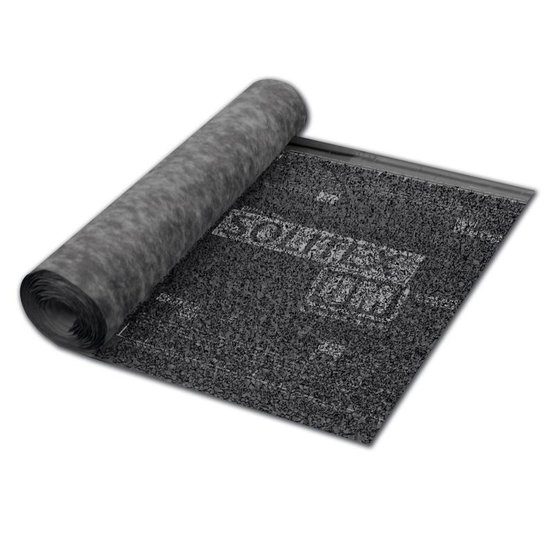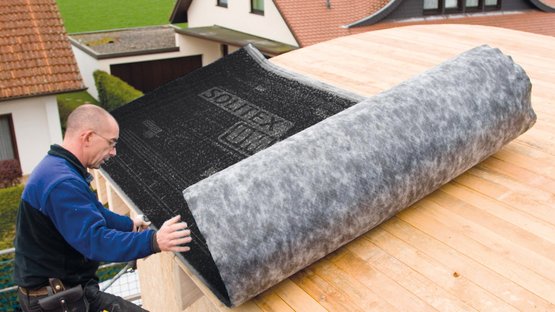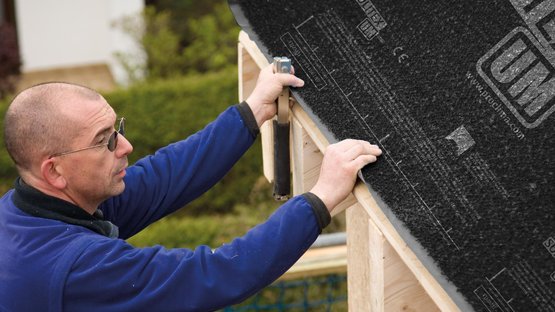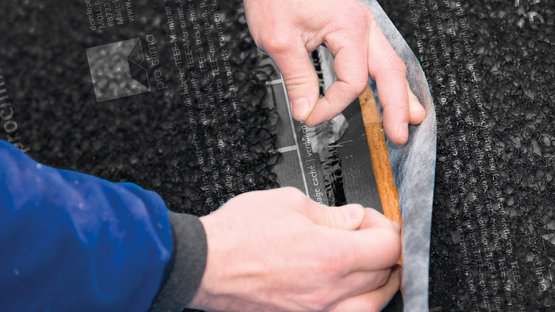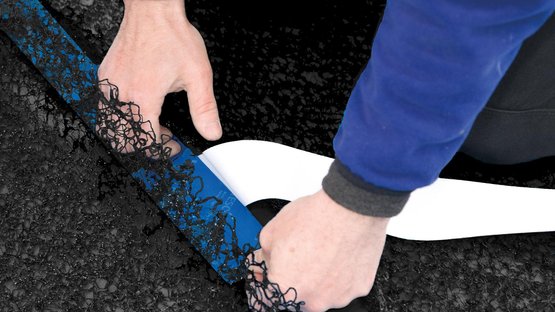Roof Weather-Resistive Barrier with 3D Separation Layer and Self-Adhesive Strip
Advantages
- High performance monolithic nonporous membrane
- 3D separation layer provides ventilation between underlay
- connect technology with two integrated self-adhesive strips
- High water resistance
- Low vapour resistance
- UV resistance up to 30 days
Areas of application
SOLITEX® UM connect is a four-layered roofing underlay with a 3D separation layer and integrated self-adhesive strips for sheet joins. It is suitable for roofing such as titanium, zinc, stainless, galvanised steel and copper. It is also suitable as a weather-Resistive barrier for internal retrofit with existing direct-fix cladding to ensure a gap is maintained between new insulation and the internal side of existing wall cladding.
Technical specs
| Material | |||
| Structured separation mesh | Polypropylene | ||
| Protective and covering fleece | Polypropylene microfibre | ||
| Functional film | Monolithic TEEE | ||
| Self-adhesive strips | Butyl rubber | ||
| Property | Regulation | Value | Regulation |
| Colour | Anthracite | ||
| Surface weight | EN 1849-2 | 420 g/m² | EN 1849-2 |
| Thickness | EN 1849-2 | 8.0 mm | EN 1849-2 |
| Vapour resistance (MVTR) | ASTM E96 Procedure B | 0.398 MN·s/g | ASTM E96 Procedure B |
| Flammability index | AS 1530.2 | < 5 | AS 1530.2 |
| Resistance to UV exposure | ASTM G154 / ASTM G155 | 30 days | ASTM G154 / ASTM G155 |
| Absorbency | AS/NZS 4201.6 | > 150 g/m² | AS/NZS 4201.6 |
| Water column | EN ISO 811 | 10 000 mm | EN ISO 811 |
| Resistance to water penetration | AS/NZS 4201.4 | Pass (> 100 mm) | AS/NZS 4201.4 |
| Air resistance | ISO 5636-5 | ≥ 0.1 MN·s/m³ | ISO 5636-5 |
| Type classification | NZS 2295:2006 | R4 | NZS 2295:2006 |
| Edge tear resistance MD/LD | TAPPI T470 | 232 N / 164 N | TAPPI T470 |
| Tensile strength MD/LD | ASTM D882 | 4.1 kN/m / 2.9 kN/m | ASTM D882 |
| Heat shrinkage @ 70°C MD/LD | ASTM D1204 | 0.0% / 0.8% | ASTM D1204 |
| Moisture shrinkage | AS/NZS 4201.3 | 0.2 | AS/NZS 4201.3 |
| Temperature resistance | EN 1109, EN 1296, EN 1297 | ‑40 °C to 100 °C | EN 1109, EN 1296, EN 1297 |


